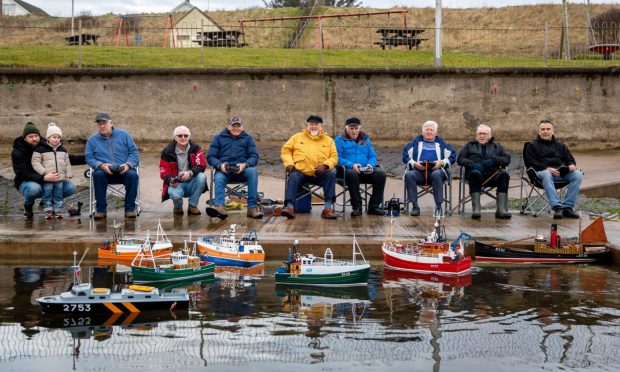It was a plant with a voracious appetite – and as I brushed my finger gently across its red, dew-glistened leaf, I could see tiny black corpses lying within its deadly embrace.
It was a sundew, and the prey were midges that had become trapped in its lethal snare.
The leaves of sundews have tiny red hairs, the tips of which are primed with sticky translucent droplets.
When a midge alights on a sundew, it becomes stuck upon the glistening lure, and then like a grisly scene from a horror movie, it is slowly digested by enzymes secreted by the leaf.
Sundews occur on nutrient poor peat bogs and damp moorland, and digesting insects is an excellent means of supplementing the meagre pickings gleaned by the roots from the impoverished soil.
Sundews don’t have to eat insects to survive, but those that do grow much bigger and produce more seeds.
I crouched down to examine this cluster of sundews on a Perthshire moor more closely with a pocket magnifying glass, and was immediately drawn into the fascinating micro-world of forested leaf hairs, each one so intricately perfect that one wondered in awe at the evolutionary forces behind their creation.
Within this one leaf, lay a treacherous jungle of danger for tiny insects – a place of struggle, and ultimately, death.
Nearby, nestled another carnivorous plant – a butterwort, with its flattened leaves splayed across the ground in the shape of a limey-green star. As with the sundew, insects become trapped on its sticky leaves.
I rose to my feet, and continued along the track that led to Lochan Oisinneach Mor in the wild landscape that lies between Dunkeld and Kirkmichael.
The moors here consist of an eclectic mix of hills, trees and lochs that are forever generous in unveiling wildlife surprises.
A short while further on, I spied a female roe deer feeding in among the heather, her wonderful foxy-red coat glowing like a welcoming beacon. She had seen me, but was still contemplating whether I posed a threat, so I crept away silently lest a wave of panic should suddenly sweep over her.
Earlier in the day I had glimpsed a fallow deer, which was noticeably darker than the roe deer, the coat a deep chocolate brown.
Fallow deer were brought to Britain from the eastern Mediterranean in the 11th Century for ornamental and hunting purposes.
On my return leg, a frog suddenly leapt out from under my feet, having luckily avoided being stepped upon. I hunkered down to examine it, revelling in the shiny splendour of its glistening, mottled-green skin, and dark penetrating eyes.
Like the sundew, this plump frog was an invertebrate hunter, and on these moors there is a rich abundance of prey to be found below the protective cover of heather. The frog was making hay while the sun still shone by feasting upon this late summer plenitude, putting down fat reserves that will see it through the dark, cold days of winter.















